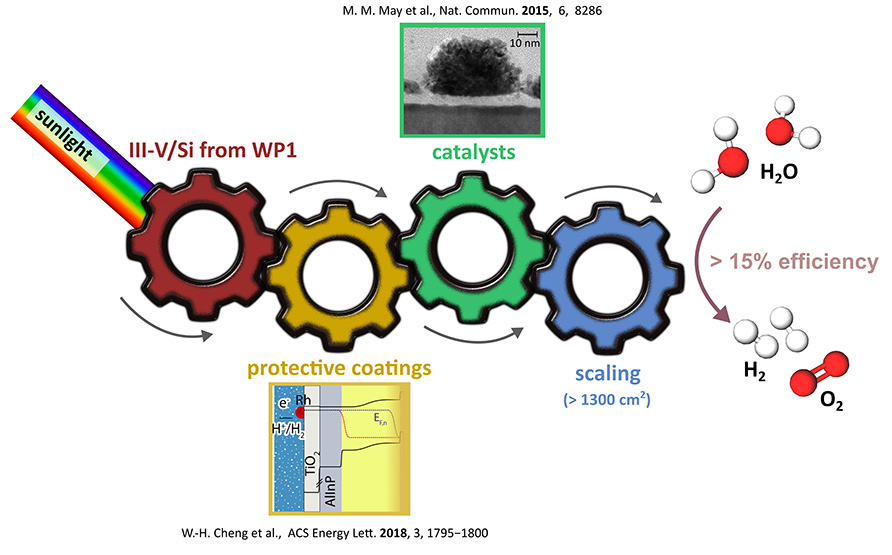The III-V/Si absorber structures produced in WP1 will be used in WP3-5 to develop demonstrators for direct solar water splitting. To this end, the process sequences that convert the absorber structures into functional photoelectrochemical cells will first be developed in WP3 with the participation of TUM, Uni Ulm, TUI, HZB, and ISE. These processes include the development of corrosion protection layers and the deposition of catalysts for efficient hydrogen and oxygen production.
Within the framework of WP4, demonstration modules are to be developed from the cells produced in WP3. To this end, the HZB and the University of Ulm will first work together to develop the necessary concepts and carry out theoretical modelling. In this way, losses due to scaling are to be minimised and the highest possible efficiency achieved. Building on WP3 and W4, functional prototypes will then be built with the support of the ISE, initially with an area of one square centimetre, and later demonstration modules with an area of > 1300 cm2.
In WP5, the conversion efficiency of solar energy into hydrogen of these demonstrators will be determined at HZB. The long-term stability and the influence of the operating conditions (light intensity and operating temperature) will also be determined. At the end of WP3 - 5, a sun-to-hydrogen conversion efficiency of > 15% is to be demonstrated for the modules with a size of at least 1300 cm2.
